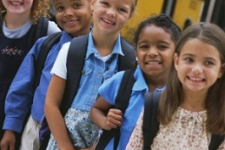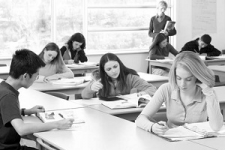Understanding the Types of Temperament and Learning

Keirsey stated that there are four types of temperament. Understanding the different types of temperament is important to determine how we should deal with students in our classroom. The different types can be characterized by the following:
Sensible, Adaptable, Active (SP)
33% people have this temperament. They have a combination of sensate qualities and perceiver […]
Behavior Intervention Strategies: Incentives

Another trick in behavior intervention strategies is using incentives to motivate the students. Following are some suggestions on how teachers can create additional incentives in the classroom and motivate struggling learners:
Reward student effort along with quality of completed work. One way to do this is to use frequent encouragement for good effort along […]
Harnessing Intrapersonal Intelligence

The intrapersonal intelligence of students needs to be harnessed efficiently in the classroom.
When new information, ideas and surroundings present challenges, a learner with strong intrapersonal intelligence may find comfort and security within themselves. This self-insight can be a way of understanding other people too. Access to one’s emotional life is important to tap […]
Teaching in a Multicultural Classroom: Student Participation

People in the U.S. are encouraged from a young age to think for themselves, stand up for themselves, express themselves, and just be themselves. Assertiveness in the United States is valued. Here, “the squeaky wheel gets the grease.” These attitudes are reflected in U.S. schools.
In contrast, an appropriate saying to describe attitudes in […]
Harnessing Spatial Intelligence in the Classroom

Spartial intelligence is one of eight different modalities or ways to demonstrate intellectual ability and individual style, according to Howard Gardner’s Theory of Multiple Intelligences that receives wide acceptance.
Mapping, drawing and doodling
A student with strong spatial intelligence best understands when seeing a picture. This learner perceives the world accurately and tries to recreate […]
Compacting Curriculum for Gifted Learners

Sometimes it is necessary to spell things out. When students object to the fact that the teacher has different expectations for different students, it is time to talk about what it means to be unique.
What is “fair?” Is it okay for the gifted students to not have to do all the work required […]
Inclusive Curriculum – A Step Towards Accommodating All Learners

Individuals with physical or sensory disabilities may encounter barriers when using traditional materials such as books, paper and pencil, keyboards, audiotapes without text equivalents, or videos lacking captions or audio descriptions. Broadly speaking, ensuring physical access to the curriculum includes enabling sensory and motor access (such as the ability to see text and […]
Understanding BICS and CALP

Teachers who work with English Language Learners (ELL) are often puzzled by the differences that they see between different language skill areas. For example, a teacher may observe that an ELL speaks easily with his peers about lunch, music, video games and what he did on the weekend, but may struggle a lot […]
Understanding Gifted Education

A lot of teachers are unsure on dealing with gifted learners in their classroom. The natural tendency is to assign more work instead of dealing with the child differently, in order to develop a different learning outcome.
“Gifted education” helps the gifted learner squeeze the most out of his learning process. But how exactly […]



